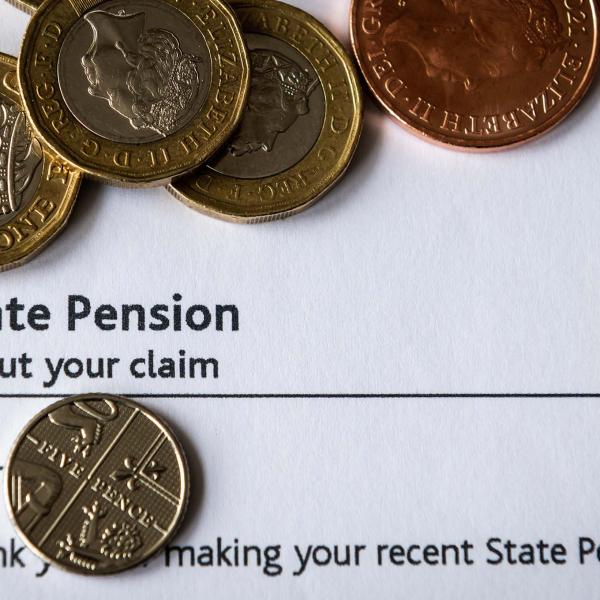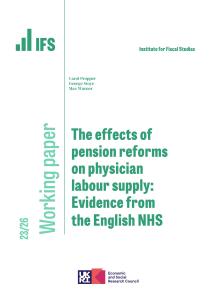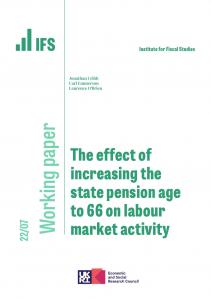The Government’s proposed new state pension system will involve everyone accruing the same level of state pension each year whilst working (so long as they earn above the lower earnings limit), or claiming benefits for being unemployed, looking after children aged 12 or under, or caring for sick or disabled adults. Anyone with 35 years of qualifying activity of this kind will receive a fixed pension of £144 a week.
A lot is being claimed for these reforms. The reforms have some desirable features but – as is often the case with pension reforms – the overall effects will be more complex. The gains from the proposed reforms are as follows:
- The proposed system looks straightforward and – in terms of its clarity –appears to be a clear improvement on the complex miscellany of rules which govern the current system.
- There will be some winners from the proposals. In particular, those who expect to have significant periods of self-employment are likely to gain. Currently they accrue rights to the basic state pension (BSP) but not S2P. Therefore, they would be likely to receive more state pension under the proposed system than they would get under the current rules. However, the case for the self-employed paying a lower rate of NI than employees would then be weakened, and the Government may decide to increase their NI contributions in return for this increase in benefits.
- A second potential group of winners, at least in terms of state pension rights, is members of contracted out defined benefit (DB) occupational schemes. The proposed reforms would end contracting out and thus increase the state pension rights that this group will accrue. Whether or not they ultimately receive a higher pension overall will depend on whether the DB schemes in question make use of the ability that the Government plans to grant them to adjust the terms of the scheme accrual to deal with the extra costs imposed by ending contracting out. The government has said it does not intend to reduce accrual rates within public sector schemes – although any increase in pension rights for public sector workers will be at least partially offset by their higher employee National Insurance (NI) contributions.
- There will also be a larger group of winners in the short-run – specifically, those who reach State Pension Age after 2017 and who have 30 years of BSP accrual but who have not yet earned a state pension, including S2P, of £144 a week. This group includes some low earners and some of those who spent time out of the labour market caring for children or disabled adults prior to 2002. However, this group will also be made up of those who have spent some significant period contracted out of the second tier state pension – that is, those who chose to give up their rights to additional state pension in return for either paying a lower rate of NI or receiving a refund of NI contributions which they will have invested in a private pension scheme. This latter group are, overall, higher-than-average earners. Of course, those who made a conscious decision to remain contracted-in may feel aggrieved that they took the wrong bet on future government policy change; among this group, those who have already accrued £144 or more of state pension rights will stop accruing any more from 2017 and hence would retire with a lower state pension than they might have expected.
But there are also some groups that will be worse off financially as a result:
- These proposals imply a cut in pension entitlements for most people in the long run. This is because, since 2002, coverage under the current pension system is almost as broad as under the proposed system (activities including employment, unemployment and looking after children aged under 12 are all credited as contributions), and the annual pension accrual from such activities is higher under the current pension system. For example as set out in the table below, in 2017–18, most low earners and non-workers will under the current system accrue £5.05 (£3.59 plus £1.46) of additional weekly state pension rights for ‘contributing’ for one extra year, provided they have not already accrued 30 years of contributions at that stage (those who already have 30 years, would accrue £1.46 of additional weekly pension). Higher earners would accrue £5.81 a week of state pension (or £2.22 if they already had 30 years of contributions). In the proposed new system, these same people would accrue £4.11 of additional weekly state pension (or nothing if they had already accrued 35 years of contributions). The key point is that £4.11 is less than £5.05 (what most lower earners would accrue under the current system) and the gap for high earners is, of course, even greater.
- Therefore, in the long run, the reform will not increase pension accrual for part time workers and women who take time out to care for children. In fact, in common with almost everyone else, these groups would end up with a lower pension at the state pension age under the new system than they would do under the current system.
- In common with all pension regimes, one needs to take account of how both rights and pensions in payment are indexed. At present S2P in payment is indexed to CPI, while BSP is triple-locked (at least for this parliament) and, presumably, the flat-rate pension would be indexed to at least earnings. Simply comparing the value of BSP plus S2P with the FRP at the state pension age will therefore overstate the extent to which rights have been reduced, since overall the state pension under the proposed system would be indexed more generously.
- The term ‘long term’ applies to anyone who will have spent 30 years or more in creditable activities (including employment, looking after children and other caring) since 2002. This, therefore, certainly includes all those who entered the labour market from 2002 onwards (that is, those born in 1986 or later) and arguably also applies to those born from about 1970 onwards.
- Those who expect to have fewer than 10 years of contributions or credits will be particular losers from the reforms, since they will receive no state pension under the proposed scheme – though the Department for Work and Pensions (plausibly) claims that the majority of people in that position are those who have spent only a short part of their working life in the UK.
We might also be wary of claims by ministers that this will be the final radical reform of state pensions. Similar claims were also made for the reforms announced in 1998, 2002 and 2006. Such frequency of reform makes it harder for individuals to plan for retirement appropriately. That said, it is perhaps more plausible than usual that today’s proposals will prove to be the last radical overhaul for a while, not least because it is moving in the same direction as the reforms implemented in the last parliament and also because a simpler system may prove to be more robust. We have spent more than 25 years gradually unpicking the State Earnings Related Pension Scheme (SERPS), which was first introduced in 1978 without sufficient consideration of the long-term consequences for the public finances.
Overall, the proposals expected in today’s White Paper look like they will bring about a welcome simplification. However, it is important to be clear that – while there will be a fairly complex pattern of winners and losers from the reform in the short-term – the main effect in the long run will be to reduce pensions for the vast majority of people, while increasing rights for some particular groups (most notably the self-employed).
Table: Summary of current and proposed state pension systems

* Caring for a sick or disabled person for more than 20 hours a week, or a registered Foster Carer, and claiming Carer's Credit.
** Primary legislation requires that the level of the BSP should be increased each year in line with average earnings growth. The current government has committed to a more generous indexation arrangement (the triple lock) for the duration of the current parliament.
*** Individuals can accrue additional State Second Pension entitlement in each year between age 16 and the year before reaching State Pension Age. Therefore, the maximum years of contributions varies depending on an individual’s SPA. For those with an SPA of 65, the maximum years of contributions is 49. For those born on or after 6th April 1978, the SPA is currently set to be 68 and therefore the maximum years of contributions will be 52.









